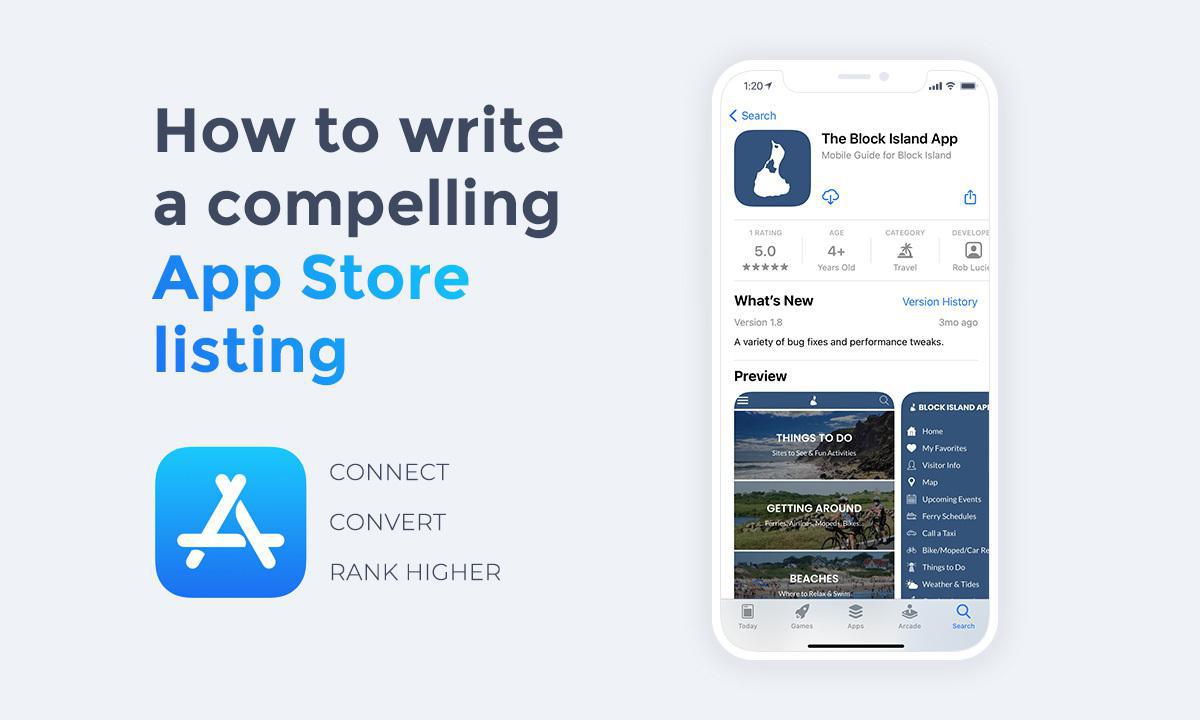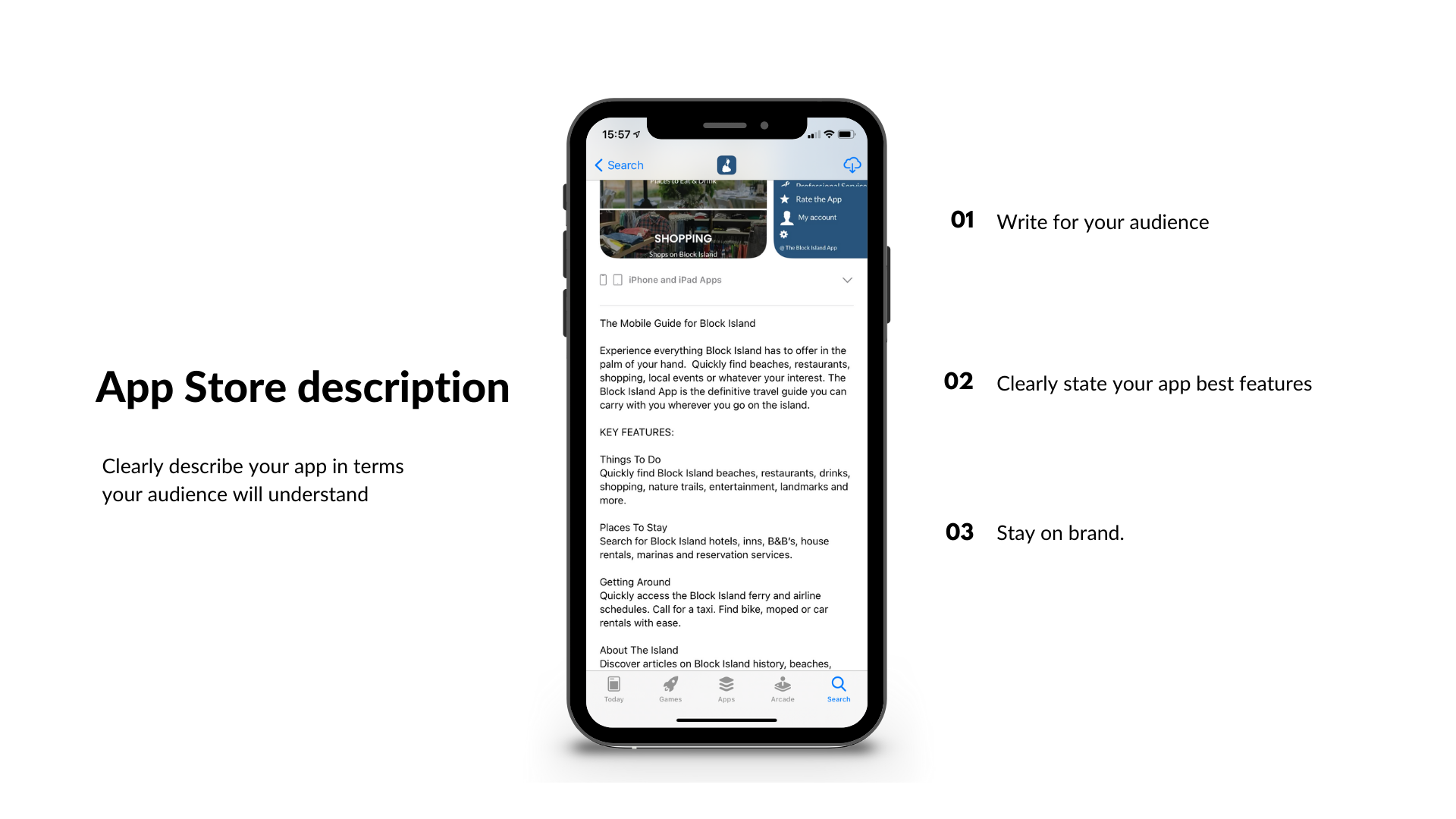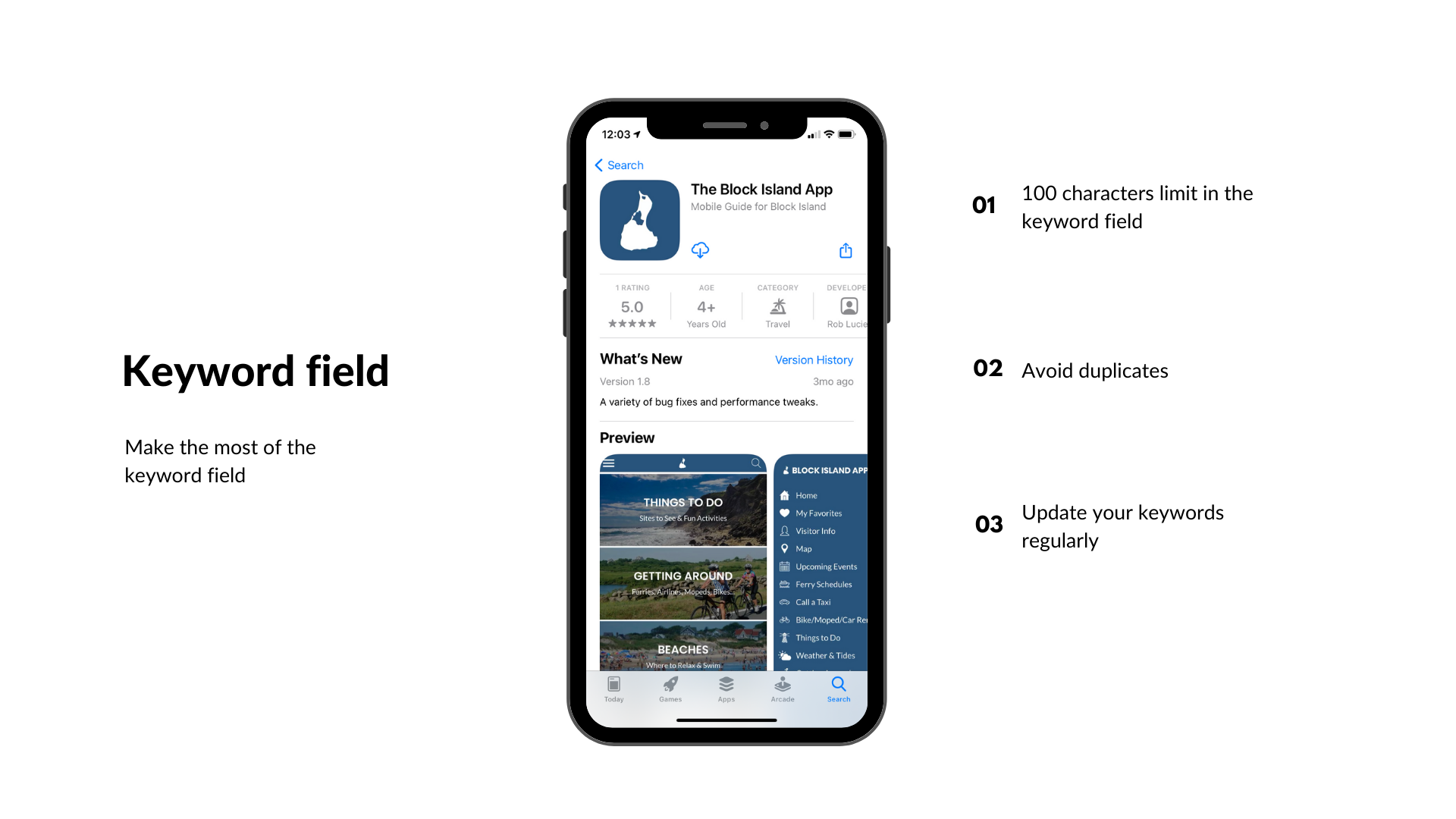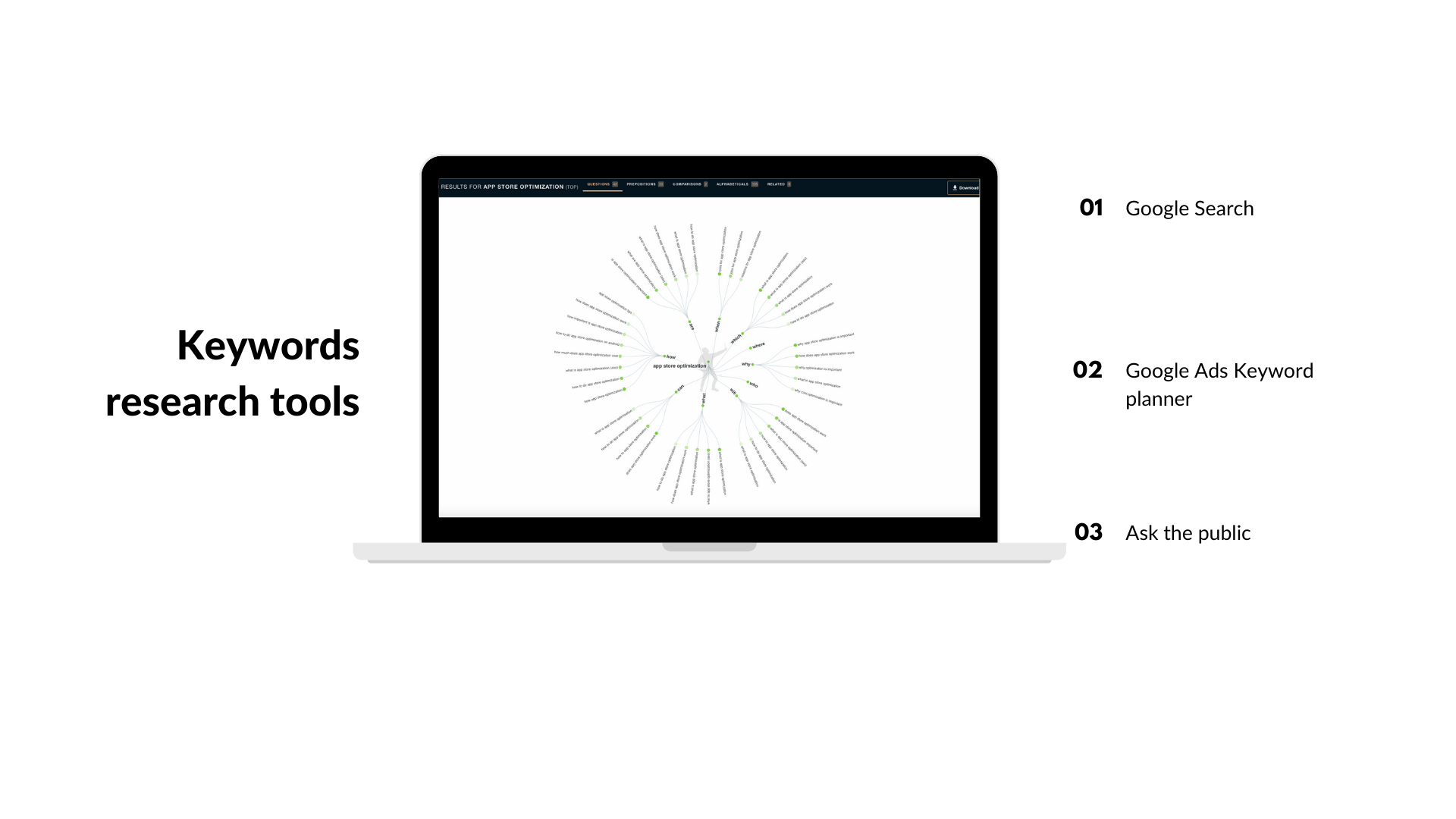How to write a compelling App Store listing
Written by Marie Pireddu on

We previously wrote articles on ASO ( App Store Optimization) and the mistakes to avoid, but today we wanted to dig a little deeper into the writing side of an App Store listing. We will focus on the App Store description and how and where to use keywords.
The App description is where you have the opportunity to tell visitors why they have to download your app. It's your chance to connect with them and highlight your app benefit. It must be writing carefully. However, on the App Store, the description is not a ranking factor. So for your ASO, you need to pay close attention to the keywords and where to use them (keyword field, App name, App subtitle)
As a reminder, the ranking factors on the App Store are the app name, the subtitle, the keyword field, and then the ratings, reviews, updates, downloads, and engagement.
The App description is where you have the opportunity to tell visitors why they have to download your app. It's your chance to connect with them and highlight your app benefit. It must be writing carefully. However, on the App Store, the description is not a ranking factor. So for your ASO, you need to pay close attention to the keywords and where to use them (keyword field, App name, App subtitle)
As a reminder, the ranking factors on the App Store are the app name, the subtitle, the keyword field, and then the ratings, reviews, updates, downloads, and engagement.
App description: Write for your audience

Even though the app description is not a ranking factor, you do need to pay attention to the writing. Indeed, a great description will convince people to download your app and the number of downloads is a ranking factor ;)
You have 4000 characters to convince these App Store visitors., take full advantage of them.
How to write a compelling description?
Note: if you're offering in-app purchases in your app, you must include it in the description for your app to be approved.
You have 4000 characters to convince these App Store visitors., take full advantage of them.
How to write a compelling description?
- Write for your audience.
- Be clear and concise
Remember who you're writing for. It should be easy for anyone to read your description. so avoid using jargon and stick with common words. Also, as a majority of people will scan over first, your first 2 -3 sentences are very important. They are the ones visible before the "...more".
Then talk about the features. As you can see in our illustrated example, the owner of Block Island described all their key features.
Then talk about the features. As you can see in our illustrated example, the owner of Block Island described all their key features.
- Stay on brand
As for any content, you'll write for your brand, your tone of voice should always match your brand. It should always remain the same: on the App listing, on the content of your app, or your answers to comments as to not confuse your users.
Note: if you're offering in-app purchases in your app, you must include it in the description for your app to be approved.
Where to use your keywords

Now that we've talked about the App description, let's have a look at the other metadata fields of the app listing where the use of keywords is crucial.: the app name, the subtitle, and the keyword field.
These are crucial for your ASO strategy. Indeed, the keywords used here are indexed by Apple and when people search those keywords on the App Store, your app will appear in the search results.
If you're creating an app for a brand, you won't have to have to come up with a name but keep in mind that the App Store allows for 50 characters. If you are looking for a name for your business then come up with short phrases that people are likely to use when searching for the service you are providing. Then choose a name that aligns with those keywords.
You can learn more about how to find the perfect name for your app in this article .
The keyword field is limited to 100 characters total, using a comma to separate them. There are a few guidelines to follow: avoid using plurals, duplicates, special characters, or the word "app". Definitely don't use competitors' names, celebrities' names, trademarks terms, these are reasons for App Store rejections.
The keywords included in this field must be relevant, describe your app, its features, how it helps your target audience. Don't simply go for trending keywords that may drive a lot of traffic but are also highly competitive. If your app is new, we recommend using keywords with lower volume.
These are crucial for your ASO strategy. Indeed, the keywords used here are indexed by Apple and when people search those keywords on the App Store, your app will appear in the search results.
- App Name
If you're creating an app for a brand, you won't have to have to come up with a name but keep in mind that the App Store allows for 50 characters. If you are looking for a name for your business then come up with short phrases that people are likely to use when searching for the service you are providing. Then choose a name that aligns with those keywords.
You can learn more about how to find the perfect name for your app in this article .
- Subtitle
- Keyword field
The keyword field is limited to 100 characters total, using a comma to separate them. There are a few guidelines to follow: avoid using plurals, duplicates, special characters, or the word "app". Definitely don't use competitors' names, celebrities' names, trademarks terms, these are reasons for App Store rejections.
The keywords included in this field must be relevant, describe your app, its features, how it helps your target audience. Don't simply go for trending keywords that may drive a lot of traffic but are also highly competitive. If your app is new, we recommend using keywords with lower volume.

How to find keywords for your App Store listing?
Start with thinking about what you would like to rank for, the words or short sentences your target audience may search for.
A simple Google search is a good way to start. Look also at the "people search" and related search" sections of your search result page.
Other tools:
Google ads keyword planner is a great tool. It's free and easy to use. You do need a Google Ads account but this can be set up in a few steps.
Answer the public is another very easy-to-use tool. Simply enter a word or short sentence and it will give you a list of related search questions in a search cloud. The results are categorized by how, what, where, why types of questions.
App Radar specializes in ASO and finding keywords for app stores' listings. They offer a free plan for their keyword planning tool.
Others like SimilarWeb are great for keyword research as well, but unfortunately, they aren't free.
Regularly check your keywords rankings to see how they perform and update them as needed. As you may already know, keyword search is a continuous effort but your efforts will be rewarded with a higher ranking and more exposure for your app.
Start with thinking about what you would like to rank for, the words or short sentences your target audience may search for.
A simple Google search is a good way to start. Look also at the "people search" and related search" sections of your search result page.
Other tools:
Google ads keyword planner is a great tool. It's free and easy to use. You do need a Google Ads account but this can be set up in a few steps.
Answer the public is another very easy-to-use tool. Simply enter a word or short sentence and it will give you a list of related search questions in a search cloud. The results are categorized by how, what, where, why types of questions.
App Radar specializes in ASO and finding keywords for app stores' listings. They offer a free plan for their keyword planning tool.
Others like SimilarWeb are great for keyword research as well, but unfortunately, they aren't free.
Regularly check your keywords rankings to see how they perform and update them as needed. As you may already know, keyword search is a continuous effort but your efforts will be rewarded with a higher ranking and more exposure for your app.
Go further
If you want to dive deeper and learn more about ASO and App Store publication, check out these articles:
 Design
Design